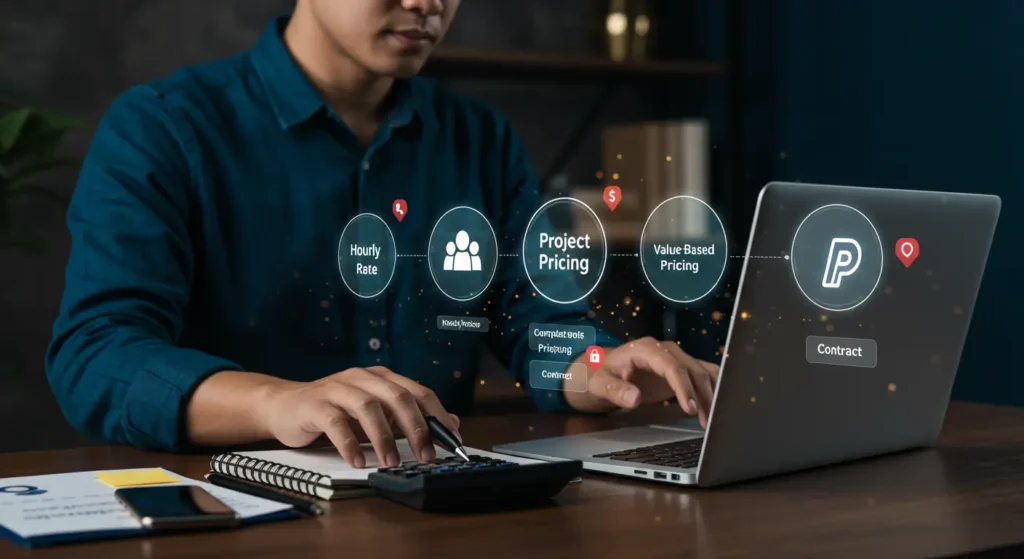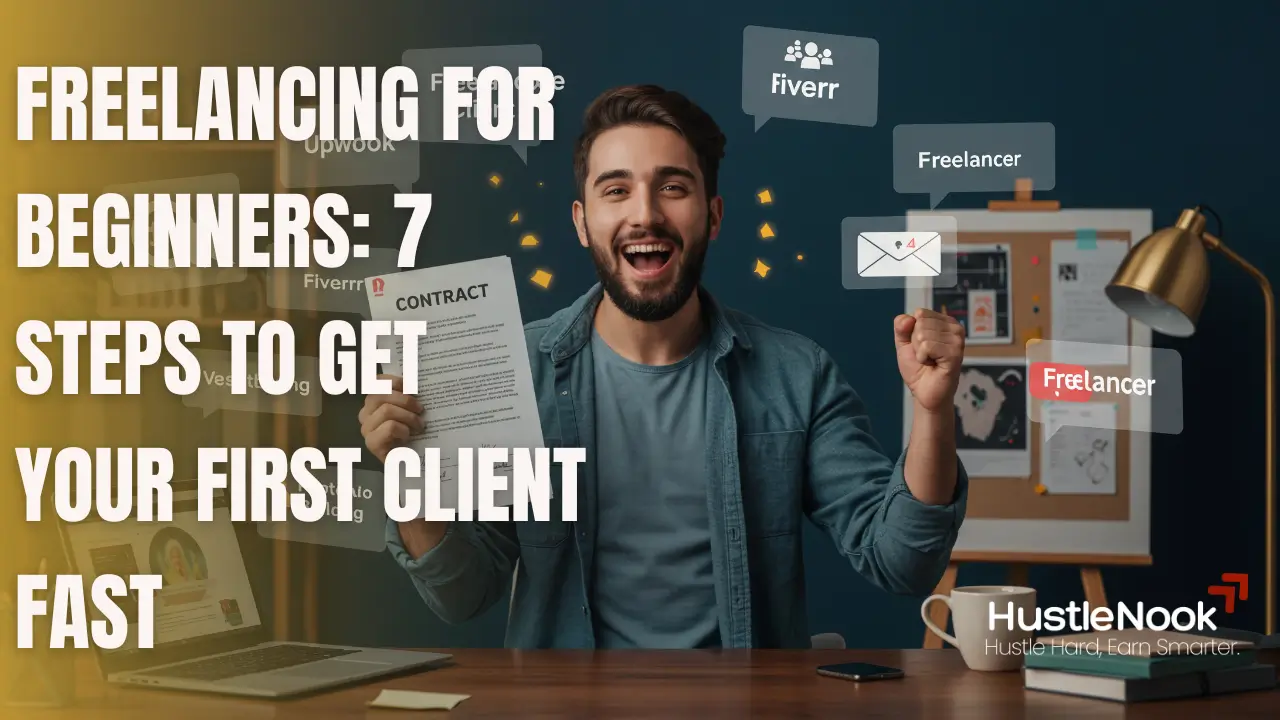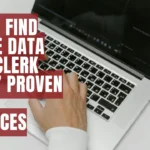Introduction
Imagine waking up, grabbing a cup of coffee, and starting your workday without commuting to an office or answering to a boss. You decide your schedule, choose the projects you love, and earn on your own terms. Sounds like a dream, right? That’s the power of freelancing for beginners.
But there’s one challenge that stops most aspiring freelancers in their tracks: How do you land your first client when you have no experience?
Many beginners struggle with self-doubt, lack of a portfolio, and not knowing where to start. The good news? You don’t need years of experience to land your first client—you just need the right strategy. This guide will break down exactly what you need to do to secure your first paying gig and build momentum in freelancing for beginners.
What is Freelancing and Why Is It Booming?
Freelancing means offering your skills as a service without being tied to one employer. Instead, you work on a contract basis for multiple clients. With businesses increasingly outsourcing work, freelancing for beginners has become a massive opportunity in 2025.
Popular Freelance Services:
✅ Writing (content writing, copywriting, email marketing)
✅ Graphic design (logos, social media graphics, branding)
✅ Video editing (TikTok, YouTube, ad creatives)
✅ Social media management
✅ Programming and web development
✅ Virtual assistance
If you have a skill—or are willing to learn one—you can start freelancing today.
Step 1: Choosing the Right Freelance Service

How to Pick a Skill That Sells
If you’re just starting, just know that freelancing for beginners requires to choose a skill that:
✅ Aligns with your strengths or interests
✅ Has strong demand in the market
✅ Can be learned quickly if you’re a beginner
If you’re unsure, start with a general skill (like writing or graphic design) and niche down later.
Niching Down for Faster Success
Generalists struggle to get clients because they blend in. Specialists, on the other hand, stand out and command higher rates.
For example:
🚫 Generalist: “I do graphic design.”
✅ Specialist: “I design high-converting YouTube thumbnails for content creators.”
By positioning yourself as an expert in a specific area, you’ll attract clients who need exactly what you offer.
Step 2: Building Your Online Presence

Creating a Portfolio (Even If You Have No Experience)
Your portfolio is proof of your skills, but what if you’ve never worked with clients? Here’s how to create one fast:
📌 Personal projects: Create sample work to showcase your abilities.
📌 Volunteer work: Offer your service to a friend or small business in exchange for a testimonial (This is how I personally closed my first SMMA client).
📌 Before-and-after examples: Show how your work improves a project (e.g., a redesigned website or an optimized LinkedIn profile).
Where to Host Your Portfolio:
- Behance or Dribbble (for designers)
- Medium or a personal website (for writers)
- GitHub (for developers)
- Hire someone to make it for you on Fiverr
Optimizing Your LinkedIn and Social Media for Clients
Clients often search for freelancers on LinkedIn, Twitter, and Facebook groups. Make sure your profiles are optimized:
✅ Use a professional photo
✅ Add a clear headline (e.g., “Freelance Copywriter Helping Brands Sell More”)
✅ Showcase your work in the Featured section
✅ Engage with industry posts and comment on potential clients’ content
💡 Pro Tip: Many freelancers land clients just by networking on Twitter or LinkedIn—without ever using a freelancing platform.
Leveraging Freelance Marketplaces
Websites like Upwork, Fiverr, and Freelancer can help you gain traction. But competition is fierce, so focus on:
✔️ Crafting a standout profile
✔️ Writing strong proposals that highlight the client’s needs
✔️ Offering an irresistible first deal (e.g., a discounted price for your first three clients in exchange for reviews)
And that is how you can start freelancing for beginners on those platforms.
Step 3: Finding Clients & Reaching Out

Where to Find Clients (Without Relying on Upwork or Fiverr)
Clients are everywhere—you just need to know where to look:
🟢 Cold Emailing: Find businesses that could use your service and pitch them directly.
🟢 Freelance Job Boards: Check ProBlogger (for writers), We Work Remotely, and AngelList.
🟢 Facebook & LinkedIn Groups: Join niche groups and engage with posts.
🟢 Reddit & Twitter: Search for posts where people are asking for recommendations.
💡 Example Cold Email Pitch:
Subject: Need a high-converting website copy?
Hi [Client’s Name],
I saw your website and noticed [mention an area for improvement]. I specialize in writing conversion-focused copy that helps businesses increase sales.
Would you be open to a quick chat? I’d love to show you how I can help.
Best,
[Your Name]
How to Write a Winning Proposal
Most beginners send generic proposals like: “Hi, I’m a freelancer. I’d love to work with you!” (Which gets ignored.)
Instead, structure your proposal like this:
1️⃣ Personalized Hook – Reference something specific about the client.
2️⃣ Highlight Their Problem – Show that you understand their pain point.
3️⃣ Offer a Solution – Explain how your service MIGHT help.
4️⃣ Call to Action – End with a clear next step.
Step 4: Setting Your Prices & Getting Paid

How to Price Your Services
You’re a beginner, but that doesn’t mean you should work for free forever. Here’s how to price yourself:
✔️ Hourly rate method: Good for long-term projects ($15-$50/hr for beginners).
✔️ Project-based pricing: Best for fixed tasks (e.g., $100 per logo design).
✔️ Value-based pricing: Charge based on results (e.g., “$500 for ad copy that increases sales”).
💡 Pro Tip: Check competitors’ rates on Upwork or Fiverr for a pricing benchmark.
Getting Paid Securely
💰 Use PayPal, Stripe, or Wise for transactions.
💰 Always use contracts to avoid unpaid work.
💰 Charge upfront deposits (50% before starting, 50% after).
Common Freelancing Mistakes to Avoid
❌ Waiting for clients instead of reaching out
❌ Underpricing and undervaluing your work
❌ Taking on projects without contracts
❌ Ignoring client relationships
Frequently Asked Questions
Q: How do I start freelancing with no experience?
A: Pick a skill, build a simple portfolio, and start reaching out to potential clients.
Q: How do I find clients fast?
A: Leverage social media, cold email businesses, and apply to freelance job boards.
Q: Can I start freelancing without investing money?
A: Yes! Many freelance skills require zero investment—just your time and effort.
Q: How long does it take to land the first client?
A: With consistent effort, most freelancers get their first client within a few weeks.
Final Thoughts: Your First Client is Just the Beginning
Freelancing for beginners isn’t complicated, but it requires consistent action. If you follow this guide and take daily steps, you’ll build a profitable career.
🚀 Ready to take the leap? Start now and turn freelancing into your dream career!






